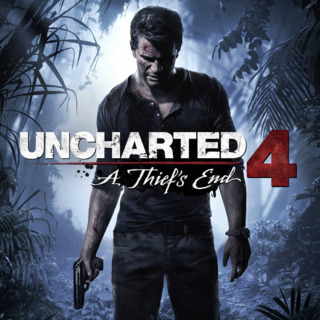The majority of the previous console generation focused on developing the concept of the “cinematic game,” attempting to ensnare the player’s senses with the feeling of starring in an interactive movie. As console power has increased and game development theory has advanced the industry has moved more and more towards open worlds; even series that were once linear, like Metal Gear and The Witcher, have made the leap from movie-like storytelling to sprawling epic. It’s a shame, then, that Uncharted 4 has to exist, as it represents the both the pinnacle and the end of the cinematic species. It’s not only a bittersweet farewell to one of the most beloved characters in gaming, but also to a dying breed of interactive storytelling.
With Uncharted 4 developer Naughty Dog has solidified its position as one of the most talented studios working today. Uncharted 4 is a meticulously crafted game, not only in the spectacular graphics (arguably the best on any console) but in the ingenious design that remains controlled and linear without ever seeming so. Playing Uncharted 4 often feels like an open world, as the environments use subconscious visual cues more subtle and ingenious than even Half-Life 2 to pull the player along invisible strings. Never before has a puppet-player been able to feel so free.
But while the player revels in false freedom, Nathan Drake himself, long-time protagonist of the Uncharted series, is feeling tied down. At the beginning of Uncharted 4 the wisecracking hero has managed to settle into some semblance of a normal life with his wife Elena. His most grand adventures consist of diving for sunken cargo crates and stamping papers late into the night. The years show on Nate’s face, and his nostalgia for his old escapades is masterfully woven in with the player’s own nostalgia for the series that started almost ten years ago (especially in one section where Nate reenacts his classic firefights with a foam dart gun and some ramshackle targets). Though the initial hours are heavy on non-interactive cutscenes, Uncharted 4 mitigates boredom by both sprinkling in action-filled flashbacks as well as using crowded environmental storytelling to minimize any necessary exposition.
Nathan’s monotonous life is suddenly interrupted when Sam, Nate’s as-yet-unmentioned elder brother, seems to come back from the dead and lures Nate back into another pulp-fiction adventure on a hunt for the legendary treasure of pirate Captain Avery.
But Uncharted 4 makes it clear that, as much as Nathan craves his previous life, he’s truly a changed man without the appetite for the excitement. Without spoiling anything, Nathan’s motivations are a far cry from the glory and riches that drove him in previous titles.
The same can be said for the rest of the characters, who are flawlessly written and acted beyond the high bar of previous Uncharted games. They’re not only older and more reserved; they’re more human, and it’s clear that the lessons about creating companionship and meaningful relationships in games that Naughty Dog learned from The Last of Us are shining through. As exquisite as the action is, Uncharted 4’s real draw is its thorough exploration of its characters that plucks more heartstrings over the course of the fifteen hour story than almost any other action game has been able to touch.
In fact the entirety of Uncharted 4 seems deliberately designed to match Nate’s struggle with the disillusionment of adventure. Combat encounters are far less frequent, and most can be approached via a simple yet effective stealth system instead of guns blazing. Though the snappy variety of firearms makes the loud approach more fun, the quiet route does a better job of reducing the ludonarrative dissonance that has plagued Uncharted for so long.
This creates some problems with level design in combat sections; sometimes in an attempt to work for both stealth and shooting enemy encounters get caught in an awkward middle ground between the two. But in general, the game has shifted focus away from moment-to-moment combat to focus on climbing, set-pieces, and emptier chapters that allow the game to show off its unbelievably detailed world and develop its characters through passive dialogue.
Everything that Uncharted 4 attempts is the best the series has ever accomplished. Naughty Dog has finally figured out how to create a decent melee system that perfectly captures the fisticuff-tussles of Indiana Jones, and has also successfully created legitimate boss fights-highly scripted hand-to-hand fight sequences that are far more flowing and satisfying than the bullet-sponges that Uncharted has used in the past. Though Uncharted 4 doesn’t have a “flagship” set piece like Uncharted 2’s exploding train or Uncharted 3’s crashing airplane, it still imparts its share of ludicrously over-the-top action. Nevertheless it’s a shame that the car chase sequence, likely the game’s best action scene, was given away at the Electronic Entertainment Expo.
There’s infinitely more to delve into here, from the addition of Nate’s jaw-snapping air punch to a rope that encourages a feeling of smooth freedom throughout both climbing and fighting, but suffice it to say, Naughty Dog has made a masterpiece. Uncharted 4 ends with a tidy sense of closure, and though the Uncharted series could make a return, Nathan Drake and his band of thieves definitely won’t. Nevertheless, it may be better for Uncharted to die here and stay dead, not only to avoid the overdone prequel/sequel trap that Gears of War and Mass Effect are dangerously close to falling into, but also to see what else Naughty Dog is capable of accomplishing. They’ve checked the box on the cinematic game; it’s time they move into uncharted territory.
Read more at http://thequestline.com/

